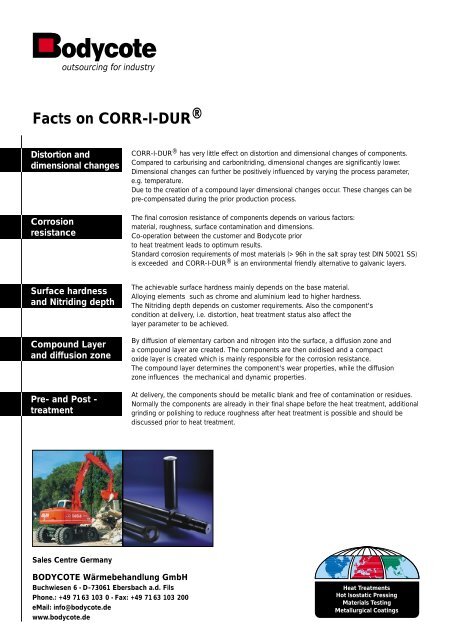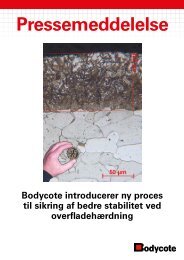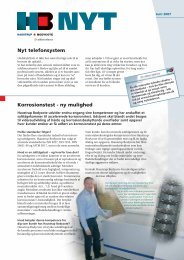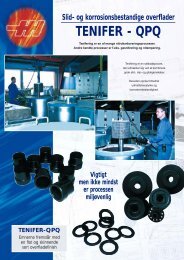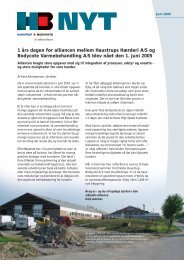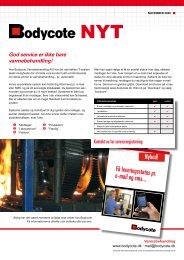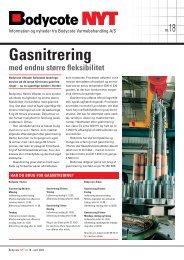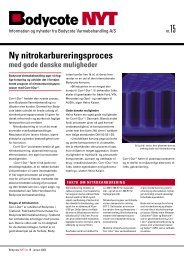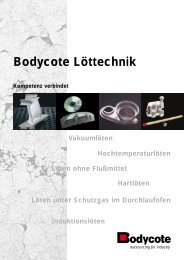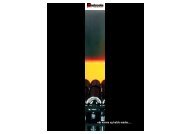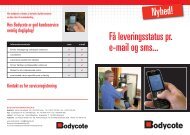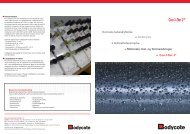CORR-I-DUR®
CORR-I-DUR®
CORR-I-DUR®
- No tags were found...
Create successful ePaper yourself
Turn your PDF publications into a flip-book with our unique Google optimized e-Paper software.
outsourcing for industryFacts on <strong>CORR</strong>-I-DUR ®Distortion anddimensional changesCorrosionresistance<strong>CORR</strong>-I-DUR ® has very little effect on distortion and dimensional changes of components.Compared to carburising and carbonitriding, dimensional changes are significantly lower.Dimensional changes can further be positively influenced by varying the process parameter,e.g. temperature.Due to the creation of a compound layer dimensional changes occur. These changes can bepre-compensated during the prior production process.The final corrosion resistance of components depends on various factors:material, roughness, surface contamination and dimensions.Co-operation between the customer and Bodycote priorto heat treatment leads to optimum results.Standard corrosion requirements of most materials (> 96h in the salt spray test DIN 50021 SS)is exceeded and <strong>CORR</strong>-I-DUR ® is an environmental friendly alternative to galvanic layers.Surface hardnessand Nitriding depthCompound Layerand diffusion zonePre- and Post -treatmentThe achievable surface hardness mainly depends on the base material.Alloying elements such as chrome and aluminium lead to higher hardness.The Nitriding depth depends on customer requirements. Also the component'scondition at delivery, i.e. distortion, heat treatment status also affect thelayer parameter to be achieved.By diffusion of elementary carbon and nitrogen into the surface, a diffusion zone anda compound layer are created. The components are then oxidised and a compactoxide layer is created which is mainly responsible for the corrosion resistance.The compound layer determines the component's wear properties, while the diffusionzone influences the mechanical and dynamic properties.At delivery, the components should be metallic blank and free of contamination or residues.Normally the components are already in their final shape before the heat treatment, additionalgrinding or polishing to reduce roughness after heat treatment is possible and should bediscussed prior to heat treatment.Sales Centre GermanyBODYCOTE Wärmebehandlung GmbHBuchwiesen 6 • D-73061 Ebersbach a.d. FilsPhone.: +49 71 63 103 0 • Fax: +49 71 63 103 200eMail: info@bodycote.dewww.bodycote.deHeat TreatmentsHot Isostatic PressingMaterials TestingMetallurgical Coatings


